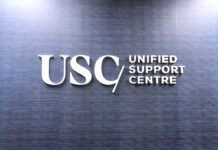The clock is ticking. The pressure is mounting. Your tired eyes blink hard at your bright computer screen in the dead of night as you stare at the cursor running across the page, hoping that what it’s creating actually makes sense. Back and forth from typing to researching you go, mentally reprimanding yourself for yet another procrastinated assignment, declaring “never again!” to your more reliable future self.
It’s now 4 a.m. and you’re finally done. The work is complete, with four hours to spare until you need to hand it in, and without checking it over, you pass out until the next morning.
A couple of weeks pass by after handing in the assignment, and you receive an email stating they believe to have found evidence of plagiarism. Your heart sinks. What happens now?
Fifty-three per cent of the undergraduate students surveyed said they had cheated on written work, according to a 2007 report conduct by Julia Christensen Hughes and Donald McCabe, Academic Misconduct Within Higher Education.
Ryan Flannagan, student affairs director at Carleton, said the number of plagiarism cases in which students are actually caught is around two to three per cent of the student population. He said he estimates the number of students who plagiarize without getting caught, however, is seven to 10 per cent.
“If you’re dedicated and determined to do something, you’ll do it. And I think a lot of students, a lot of people in general, see it as the easy way,” he said. “Or they have other commitments, a part-time job, a social life, and they can’t put in the work but want the marks, so they cheat.”
At the end of every Carleton course outline is a small blurb about the university’s academic integrity policy. Buried at the bottom somewhere between what to do if you’re pregnant and religious accommodations, the facts about plagiarism are there.
In the study by Christensen Hughes and McCabe, 67 per cent of students perceived the consequences of cheating to be very high. It certainly isn’t a topic that’s taken lightly by the faculty. So why is there still the incentive to cheat?
“But I didn’t mean to plagiarize!”
Sarah Hogenbirk, a history instructor at Carleton, has been a teaching assistant for four years. While she has experience dealing with plagiarism with students, she said the problem isn’t widespread, and it’s often unintentional.
“Most time it’s been done last minute, late at night, [when a student has] not taken notes as carefully as they should have. And what’s common knowledge isn’t always common knowledge,” she said. “It mostly comes from the craziness of undergrad and not managing their time as effectively as they could, which we’ve all done.”
Jim Kennelly, an ombudsperson at Carleton, said he’s seen it all—he was present when Carleton first wrote the current academic integrity policy in the 80s. He said he agreed with Hogenbirk, adding poor time management is a major contributor to plagiarized work.
“Students are feeling swamped, overwhelmed because they have to get that assignment in,” he said.
Flannagan, however, said cases of intentional plagiarism outnumber those of unintentional.
“I think there are a number of reasons [why students plagiarize],” he said. “One being it’s the easy way out . . . Some are under a lot of pressure to perform, and in order to get those marks they’re willing to do anything it takes to get that A to position themselves moving forward.”
Bogdan Stanciu, a fourth-year journalism student at the University of Toronto, said he was accused of plagiarism on one of his final papers because it was “much better” compared to the rest of his work during the term.
“It was because I was so lazy the rest of the semester, and I only picked up the pace for that last paper,” Stanciu said. “I ended up
going to see my prof, and he recognized me from a class I had with him before.”
Stanciu said he explained what happened to his professor, who
understood and double-checked his paper.
“He realized it was my writing style,” Stanciu said. “Funnily enough, he said he recognized my work because I made the same typos.”
It’s not cheating, it’s “information sharing”
The case is different across faculties, however. In engineering, cases of unintentional plagiarism are slim to none, according to Richard Dansereau, associate dean of student affairs.
“In terms of most of the engineering courses, that’s rare simply because they’re often not referring to someone else’s idea,” he said. Most of the plagiarism cases he deals with are unauthorized collaboration between students, or directly copying from past assignments of other students.
“Things like Course Hero and other online forums are certainly making it easier for students to share information with one another,” he said.
In a first-year engineering course the previous year, Dansereau said 90 out of approximately 1,000 students were caught plagiarizing, making the number almost 10 per cent of the course population.
Upper-year cases also tend to be more intentional than first-year cases, Flannagan said, although the number of plagiarism cases overall is the highest in first year. A part of this is due to the fact that students aren’t taught how to cite properly in high school.
One professor’s answer to the plagiarism question
Norman Hillmer, a history professor, has been teaching at Carleton for 25 years. He said plagiarism doesn’t play a large role in his classroom because he changes his assignments regularly.
“I devise assignments that are very individualistic, and I go out of my way to never repeat a question from year to year,” he said. “And students give themselves away, especially to a professor who’s read a few hundred essays in his time.”
Some of the instances that he’s come to notice are when students use a different voice in the essay, showing where some parts of it have been directly copied. Another case is when he receives an essay that has nothing to do with the topic that was assigned, or, as a Canadian history professor, someone writing “we Americans” at some point in the essay. “That’s a real red flag,” he said.
Another form of plagiarism is also plagiarizing yourself, Hillmer said, where you hand in one assignment to two separate professors.
“I just wrote two books on one guy. I spent days and weeks making sure that I didn’t use the same sentences or phrases in one book that I’d used in another book, so I didn’t want to plagiarize myself,” he said.
It’s more obvious than you think it is
Hogenbirk said the most obvious forms of plagiarism that she’s seen is when a student copies and pastes a paragraph from a website, and the hyperlink to that paragraph is left in the essay.
“Two students in the same group handing in essentially the same essay to the same TA in the same class,” she said. “That’s fairly obvious and fairly overt.”
Dansereau said the most obvious case he’s seen is a student photocopying another student’s assignment and then crossing that student’s name out and writing their own.
Despite the smirks on the faces of people who have seen the more comically obvious cases, plagiarism is by no means taken lightly in academia.
“Actively trying to game the system, and taking someone’s idea intentionally . . . you’re not doing yourself any favours, and you’re certainly not doing your institution any favours,” Flannagan said.
Kennelly said plagiarism not only reflects poorly on the student, but on Carleton as well.
“You don’t want people after saying ‘Oh, well, I got a degree at Carleton and I used my next-door neighbour’s essays all the way through’ because then the degree isn’t worth anything,” he said. “So then the university needs to protect the degree for students who are coming through and working hard to get there.”
Hillmer said not plagiarizing is really just a case of being honest, and citing any information in an essay that may have been slightly reworded is an easy way to avoid any cases of accidental or purposeful plagiarism.
“Plagiarism, you know, it’s got that awful sound to it and it sounds like a very technical thing or a very remote thing, but all it is really is it’s just another word for thievery,” he said. “And you know the really clever plagiarists who work so hard, and spend so much time covering themselves up, they might as well have done it the right way in the first place.”





